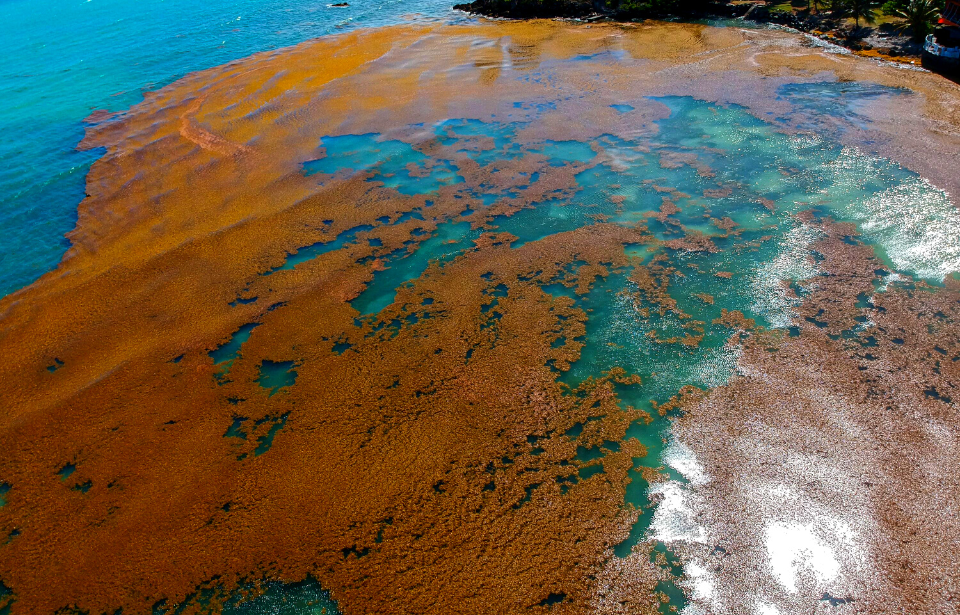Did you know that there’s a “seaweed season” each year? In Florida it typically falls between March and October, but 2023 has already seen plenty of the stuff arrive on state beaches and more is expected to arrive throughout the summer.
There’s also a massive blob of seaweed, roughly 5,000 miles wide, heading for Florida and the Caribbean. It threatens to disrupt tourism, and as it washes up onshore will be a danger to people around it. However, it’s not as scary as it may sound and isn’t entirely a bad thing. In fact, it can provide a great benefit for marine ecosystems.
What exactly is a seaweed blob?
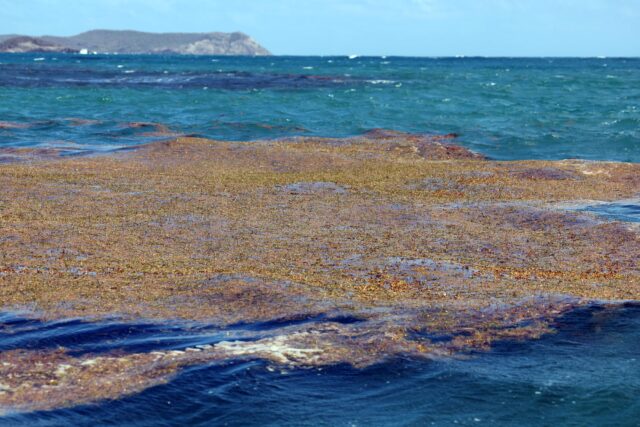
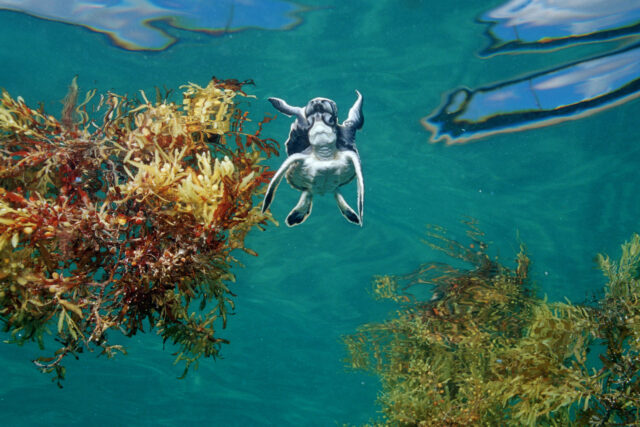
A seaweed blob is actually called a seaweed bloom, and it is not one massive unit but is instead a group of seaweed mats that move together. Each mat is a large seaweed patch on the ocean’s surface that never attaches to the ocean floor. They all float along with the ocean’s currents.
Currently, sargassum seaweed makes up one of the largest blooms in the Atlantic Ocean. It is a brown type of algae that is distinguishable not only by color but also by the gas-filled “bubbles” that are formed at its stems to help it stay afloat.
Although a massive bloom of seaweed may seem immediately alarming, it is not necessarily a cause for concern. These blooms have been forming since Christopher Columbus sailed the Atlantic, and they have come under the study and observation of scientists for years.
Seaweed blooms are safe havens for many sea creatures, creating an upside-down reef-like environment for them. Fish, turtles, seabirds, reptiles, and many more species of marine life call these blooms home.
Why it can be dangerous
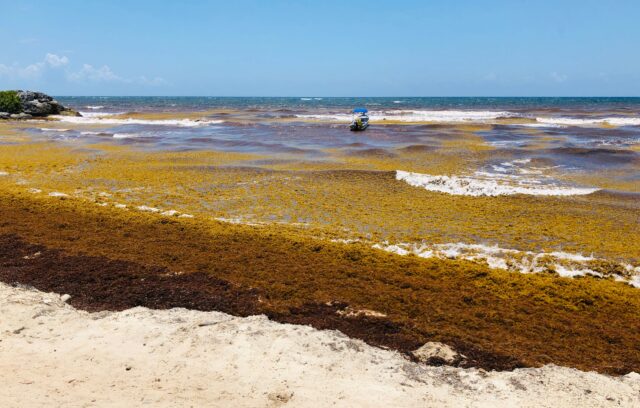
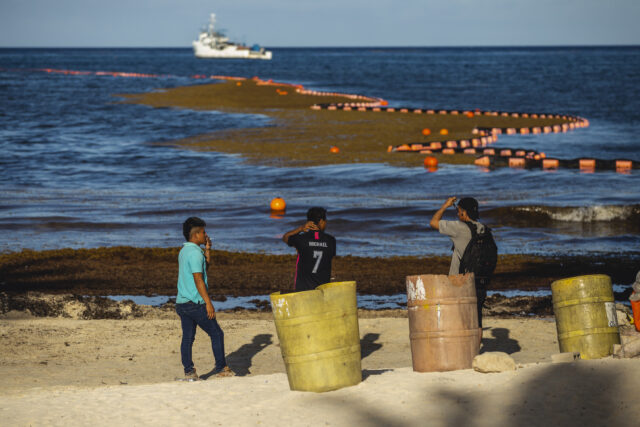
For all of the good they can provide, seaweed blooms have also proven to be quite harmful as well. When it comes to marine life, a large bloom of sargassum seaweed can become dangerous for the creatures that call it home. If the bloom grows too large, it begins to suck away all the oxygen from the water. This makes it uninhabitable and turns it into a dead zone, forcing the marine life out.
For humans, the bloom can be dangerous once they’ve drifted ashore on the beaches. As the sargassum seaweed begins to decay, it releases hydrogen sulfide. This is a harmful chemical that causes a variety of health problems in people exposed to it, from symptoms as mild as eye irritation to as severe unconsciousness and respiratory issues. It has also been linked to increased risks of pregnancy complications in women.
The Great Atlantic Sargassum Belt
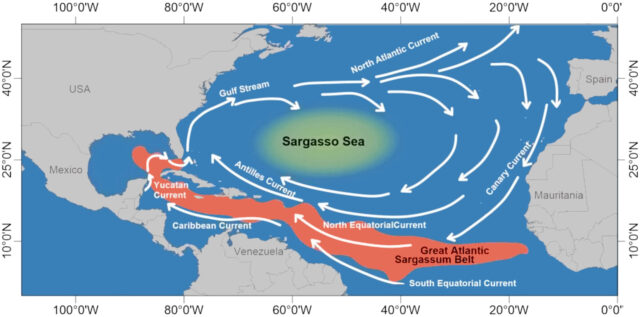
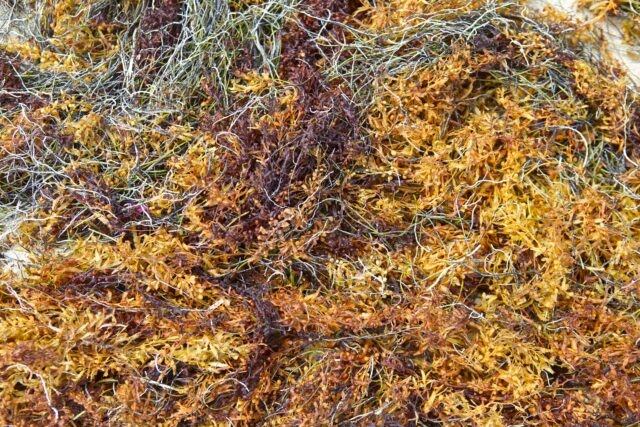
The Great Atlantic Sargassum Belt is a massive sargassum bloom that’s been monitored by the University of South Florida’s Optical Oceanography Laboratory since 2011. Using satellite imagery, they have been able to gauge the size of the belt each year, concluding that it’s getting larger and larger.
In June 2022, the team of scientists estimated that the weight of the Great Atlantic Sargassum Belt was a whopping 24.2 million tons. It measures in at approximately 5,000 miles wide, almost twice the width of the continental United States. Unsurprisingly, the belt can be seen from space.
Blooms from the belt have been washing up on the beaches of Florida, Mexico, and other Caribbean locations year after year. However, as the belt grows larger, it is becoming more and more difficult to deal with the masses of seaweed washing ashore.
Problems with disposing of sargassum seaweed
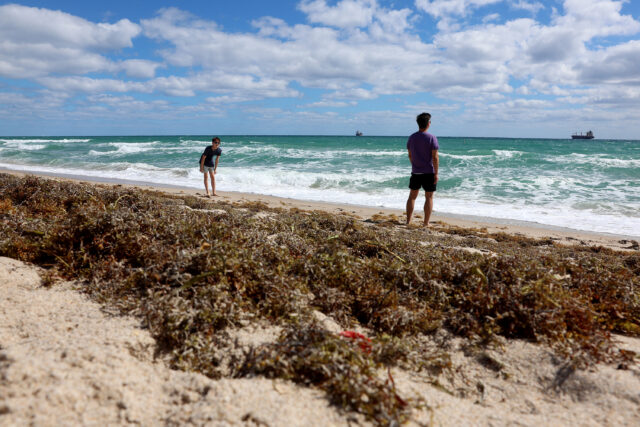
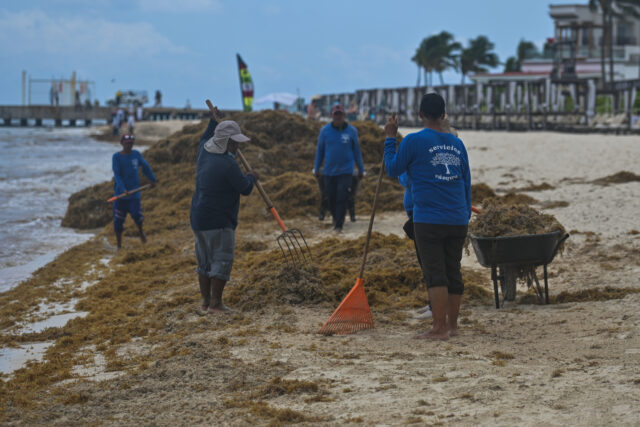
The increasing size of the Great Atlantic Sargassum Belt has been directly linked with the climate crisis. Factors like increasing ocean temperatures, changing currents, and shifting hurricane patterns have been identified as contributors to the belt’s increasing size.
Additionally, human interference in the way of deforestation and increased runoff of fertilizers in farming have increased levels of various chemicals in certain parts of the ocean. These chemicals promote the growth of sargassum seaweed.
When it comes to ridding beaches of the massive blooms, there is still no concrete solution. The seaweed cannot be used for fertilizer, nor can it be used for food, as it contains arsenic and other chemicals which are extremely harmful to the human body. In that same vein, it cannot be composted, as those chemicals can seep into groundwater, potentially introducing it into our drinking water and into the human food chain.
More from us: Enormous Grey Blob on California Beach Turns Out to Be Extremely Rare Creature
As of now, the massive Great Atlantic Sargassum Belt will continue to float toward the beaches of Florida, Mexico, and the Caribbean.
